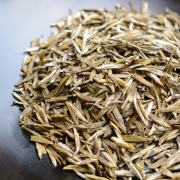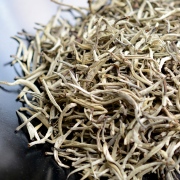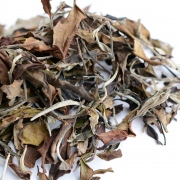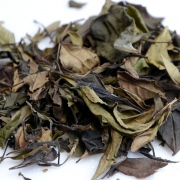Chinese White Tea
White tea is produced mainly in Zhenghe and Fuding counties, which are parts of Fujian Province in China. Tea is classified according to the processing criteria, and white tea is considered to be one of the six best kinds of Chinese tea.
In the case of white tea, the buds of the tea leaves are bluish white. Due to this, at first glance the tea looks white, so it is called "white tea". The white-looking buds of the leaves are fluffy, and it almost seems as if the green leaves are wearing fluffy, white blankets. They are very beautiful.
White tea is produced by allowing the freshly-picked tea leaves to naturally dry out. (The picked leaves are supposed to rest for a while, during which time they become fermented and the water contained in the leaves evaporates.) There are two ways of drying the leaves out: One way is that the leaves are dried out by being exposed to sunlight, and the other is that they are allowed to dry out in a room. White tea is produced simply by allowing the leaves to dry out naturally - there is no process of kneading involved. The rate of fermenting is about 10%, so it is a light fermentation in this case. White tea has been long consumed in Guangdong Province in China, Hong Kong and some tropical areas such as Southeast Asia. This tea is supposedly effective in removing extra heat from the body and it is also believed to have antioxidant, anti-inflammatory, and beautifying effects. “Baihao Yinzhen”, “Bai Mu Dan", and “Shou me" famously exemplify all the best facets of white tea.










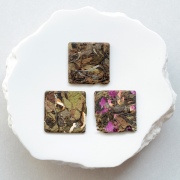
 SORT BY
SORT BY 







